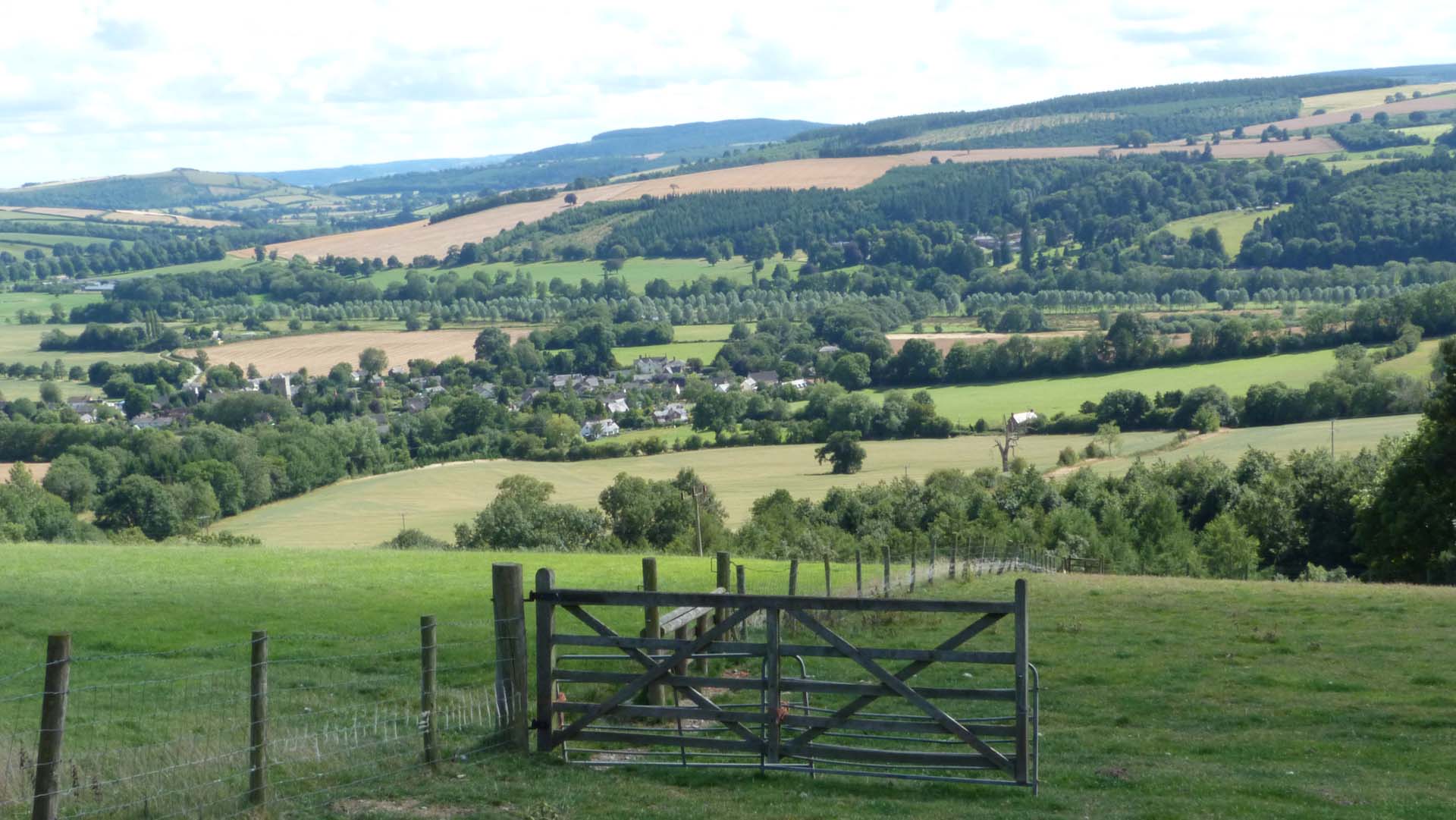These hamlets to the north east of Bishop’s Castle lie in the undulating land of the Camlad and West Onny Valleys. The Shropshire Way goes through Lydham, More and Linley where there are views of the private Linley Hall, built in 1742.
Linley Beeches thought to be planted c.1730 are a landmark on Shropshire Way. The Church and churchyard at Lydham are next to Norman motte and bailey and former Mill, mentioned in Domesday ‘paying one pig’ in taxes. The Lydham Manor Oak is one of one of England’s largest trees (girth 39ft/12 metres).
At Lyham Heath there is the site of the station at the end of the old Bishop’s Castle Railway.
More is a tiny village with ancient farms and cottages. There is evidence of Roman building associated with lead-mining in this area, an extensive motte and bailey castle on the Way and an ancient church on circular site.
Snead has an Isolated tiny church (across field) beside the River Camlad – the only river flowing from England into Wales.

